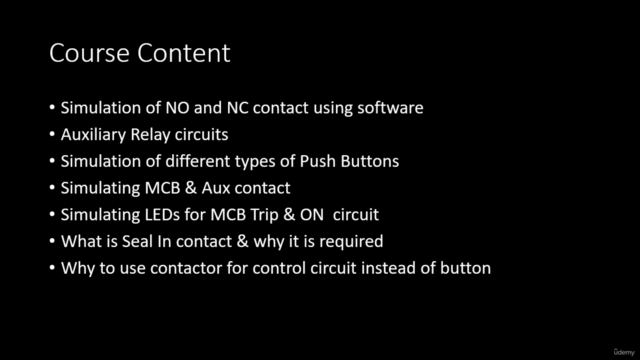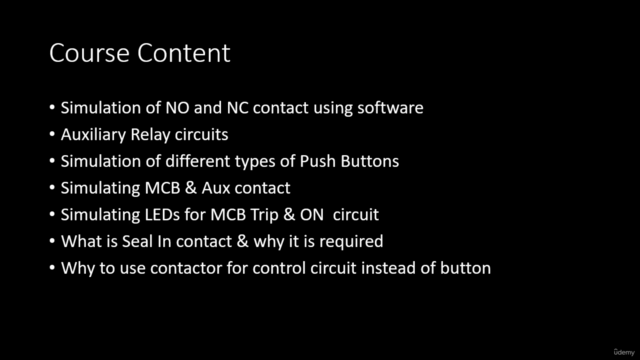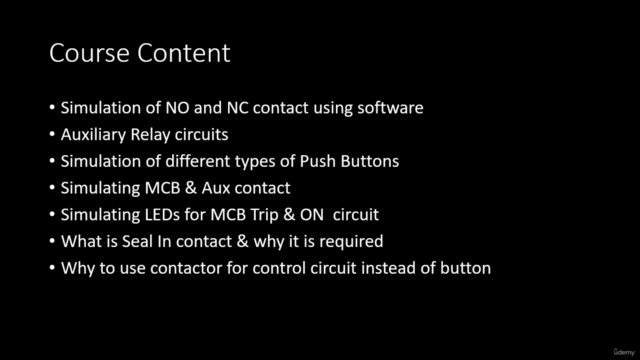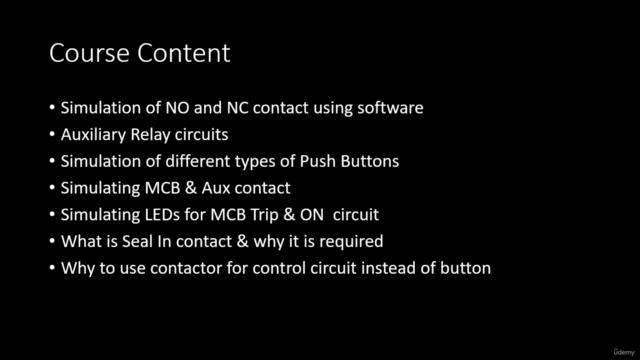Mastering Schematics Electrical Drawings Episode 4

Why take this course?
🚀 Course Title: Mastering Schematics Electrical Drawings Episode 4 🛠️
🎉 Course Headline: Learn from Professionals - Electrical Power Engineering
Course Description:
Welcome to the fourth episode of our comprehensive Mastering Schematics Electrical Drawings course! In this episode, we delve deep into the intricacies of electrical control systems, focusing on components and principles that are crucial for designing robust and efficient power engineering solutions. 🎓
Course Contents:
**1️⃣ Understanding Switches and Push Buttons:
- 🤫 Normally Open (NO) & Normally Closed (NC) Contacts: We kick off with the basics of NO and NC contacts, exploring their significance in circuit design.
- 🛠️ Different types of switches and push buttons are discussed, including momentary and latching varieties, along with their applications in control circuits.
- 🖥️ Simulation Demonstration: We'll use simulation software to show how switches and push buttons behave in different circuit configurations like series and parallel connections.
- 🌍 Real-World Applications: Practical examples will bring the concepts to life, showing the importance of these components in various control systems.
**2️⃣ Bistable or Latch Relay:
- 🧠 Understanding the operation and maintenance states of bistable relays (also known as latching relays).
- 🔄 Troubleshooting tips for common issues associated with bistable relays.
- 🖥️ Simulation Exercises: Simulate bistable relay circuits to demonstrate their practical applications, such as memory circuits or toggle switches.
**3️⃣ Step Relay and its Operation:
- 🚧 Introduction to step relays and their role in controlling sequential operations within circuits.
- ⏱ Understanding the principle of operation for step relays and how they advance through multiple positions.
- 🌍 Examples of applications like conveyor belt control or machine sequencing are provided.
- 🖥️ Simulation Guidance: Students will create and analyze step relay circuits using simulation software, highlighting their sequential nature.
**4️⃣ Timer Circuits:
- ⏰ An overview of timers in automation and control systems, differentiating between on-delay and off-delay timers.
- 🛠️ Designing timer circuits using simulation software, with a focus on setting time intervals and adjusting parameters.
- 🌍 Real-world examples where timer circuits are crucial for tasks such as lighting control or motor sequencing.
**5️⃣ Seal-In Circuit:
- 🔒 Defining seal-in circuits and their role in maintaining circuit continuity and latching relay states.
- 🖥️ Illustrating the behavior of seal-in circuits through simulations.
- 🌍 Hands-on exercises to explore the impact on circuit performance with different configurations and parameters.
**6️⃣ DC MCB Status Supervision & DC Supply Supervision:
- 🛡️ The importance of supervising DC circuits, particularly for safety and reliability in applications like battery management systems or renewable energy systems.
- 🖥️ Designing and simulating DC supply supervision circuits to detect faults or deviations from normal operating conditions.
Course Approach:
This course is designed to engage you with interactive simulations, hands-on exercises, and real-world examples that will solidify your understanding of electrical schematics. 👩🏫👨🏫
- Interactive Simulations: Gain practical experience by manipulating virtual components in a controlled environment.
- Hands-On Exercises: Apply your knowledge with exercises that require you to design and analyze circuits.
- Real-World Examples: See how the concepts taught apply to real-life scenarios, giving you a deeper understanding of their importance.
Additional Support:
To enhance your learning journey, supplementary materials such as textbooks, articles, or online resources will be provided. These will support deeper understanding and encourage self-directed learning. 📚✨
Enroll now and take the first step towards mastering electrical schematics with our expert-led course! Let's embark on this journey together to unlock your full potential in the field of Electrical Power Engineering. 🚀🔧💪
Course Gallery




Loading charts...